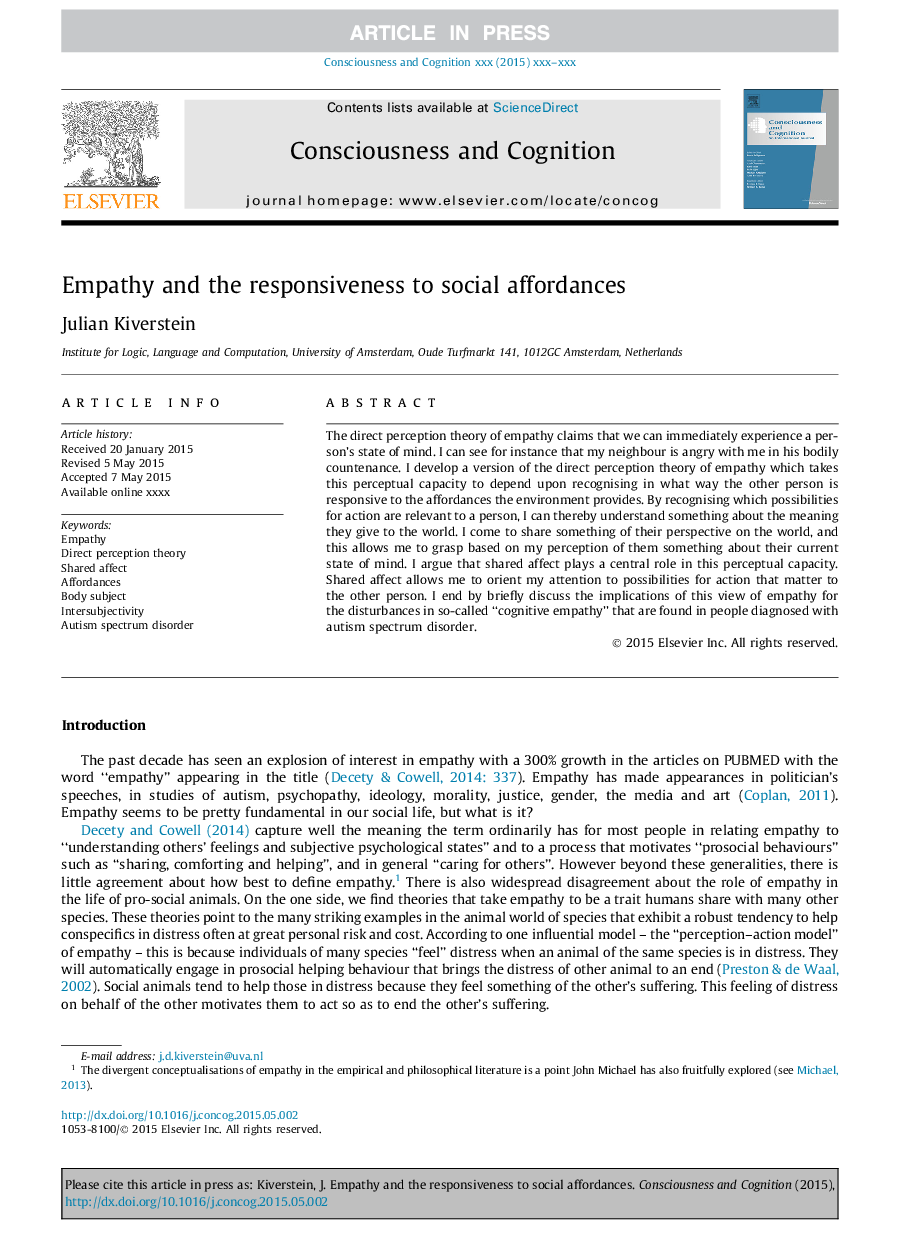| Article ID | Journal | Published Year | Pages | File Type |
|---|---|---|---|---|
| 7288978 | Consciousness and Cognition | 2015 | 11 Pages |
Abstract
The direct perception theory of empathy claims that we can immediately experience a person's state of mind. I can see for instance that my neighbour is angry with me in his bodily countenance. I develop a version of the direct perception theory of empathy which takes this perceptual capacity to depend upon recognising in what way the other person is responsive to the affordances the environment provides. By recognising which possibilities for action are relevant to a person, I can thereby understand something about the meaning they give to the world. I come to share something of their perspective on the world, and this allows me to grasp based on my perception of them something about their current state of mind. I argue that shared affect plays a central role in this perceptual capacity. Shared affect allows me to orient my attention to possibilities for action that matter to the other person. I end by briefly discuss the implications of this view of empathy for the disturbances in so-called “cognitive empathy” that are found in people diagnosed with autism spectrum disorder.
Related Topics
Life Sciences
Neuroscience
Cognitive Neuroscience
Authors
Julian Kiverstein,
